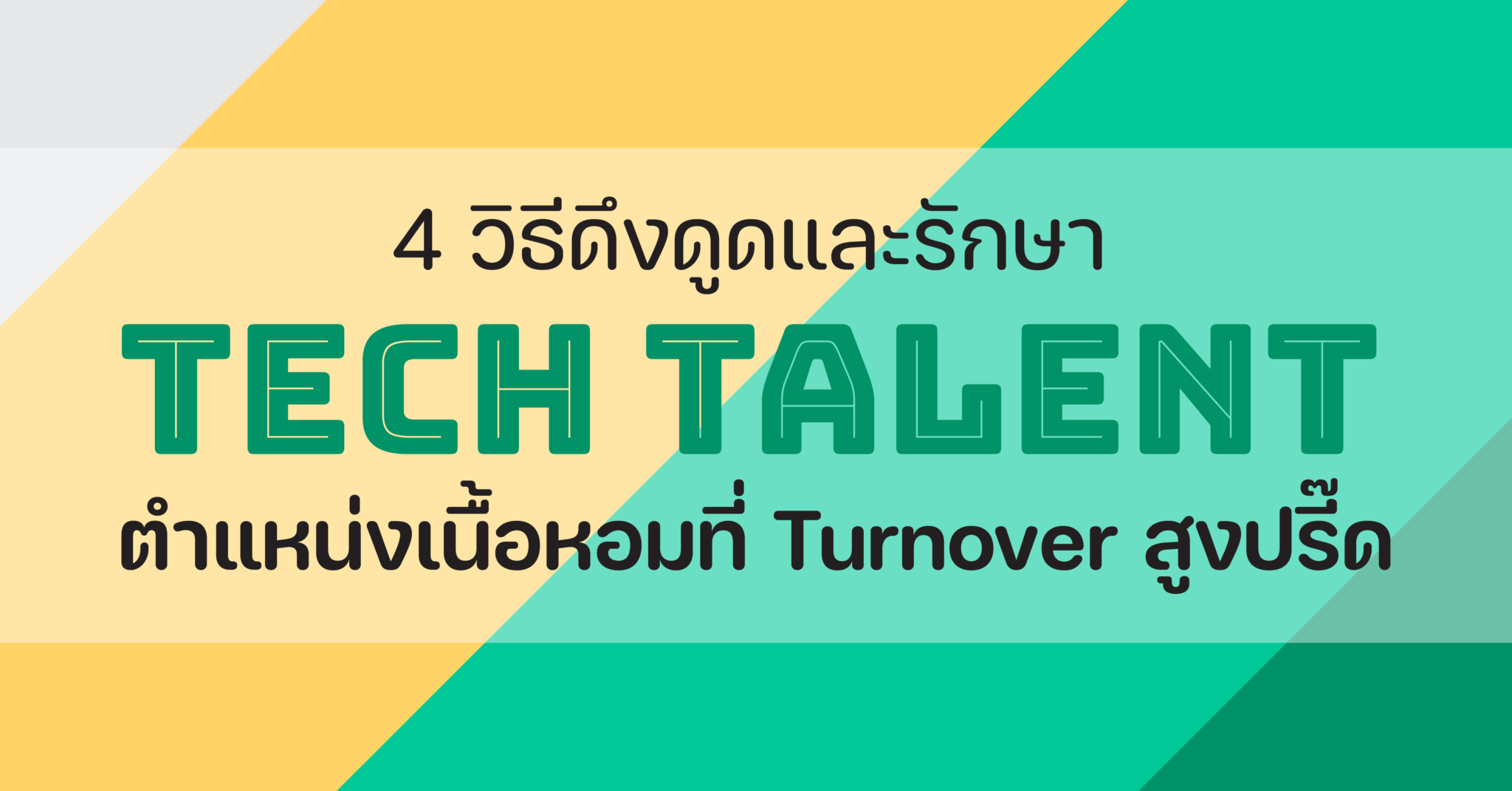Tech Talent Turnover Troubles: Maintaining Continuity in Development Teams

The technology industry is grappling with a significant challenge: high turnover rates among tech talent. This issue poses a major obstacle to maintaining continuity in development teams and ensuring the successful execution of projects. To address this problem effectively, it’s crucial to gain a comprehensive understanding of its underlying causes and implement proactive measures to mitigate its impact.

One of the key factors driving tech talent turnover is the shortage of skilled professionals. The industry is experiencing a rapidly growing demand for skilled engineers, developers, and other tech specialists, leading to intense competition for top talent. As a result, tech professionals have ample opportunities to explore new roles and find better compensation packages, contributing to high turnover rates.

Another significant factor is the lack of long-term career development opportunities. Many tech professionals leave their positions due to a perceived lack of growth potential and advancement opportunities within their current organization. This issue is particularly prevalent in small and mid-sized companies that may not have the resources or structure to provide clear career paths for their tech talent.
To maintain continuity in development teams amidst the challenges of high turnover, organizations need to implement a comprehensive strategy. One crucial aspect is to invest in employee retention initiatives. This can include providing competitive compensation packages, offering comprehensive benefits, and creating a positive and supportive work environment that fosters employee satisfaction and engagement.
Another essential element is to focus on skill development and career advancement. By providing ongoing training and opportunities for growth, organizations can demonstrate their commitment to their employees’ professional development and create a more fulfilling work experience. This approach helps retain valuable tech talent and ensures that teams have the necessary skills to deliver project outcomes effectively.
Effective communication is also vital in addressing tech talent turnover. Open and transparent communication allows team members to voice their concerns, identify areas for improvement, and work together to create a work environment that meets their needs. By addressing issues promptly and proactively, organizations can create a sense of trust and belonging that fosters employee retention.
Moreover, organizations need to consider the impact of technology and remote work on talent retention. The rise of remote and hybrid work arrangements requires leaders to adapt their management styles and create a strong team culture that transcends physical distance. By providing support, resources, and opportunities for collaboration, organizations can maintain team cohesion and reduce the likelihood of turnover due to isolation or lack of connection.
In conclusion, tech talent turnover remains a critical issue that can disrupt development teams and hamper project success. To address this challenge, organizations must adopt a holistic approach that focuses on employee retention, skill development, effective communication, and embracing the evolving landscape of technology and remote work. By implementing these measures, they can create a more engaged and fulfilled workforce, fostering greater continuity and productivity in their development teams.## Tech Talent Turnover Troubles: Maintaining Continuity In Development Teams
Executive Summary
The technology industry is experiencing a severe shortage of skilled talent, leading to high turnover rates and disruption within development teams. This comprehensive guide explores the key factors contributing to this problem and provides actionable strategies for organizations to mitigate its impact.
Introduction
In today’s rapidly evolving technological landscape, businesses rely heavily on their development teams to drive innovation and stay competitive. However, the tech industry is facing an unprecedented talent shortage, resulting in high turnover rates and a shortage of qualified candidates. This guide delves into the causes and consequences of this issue and offers practical solutions to help organizations retain their valuable tech talent.
FAQs
- What are the primary reasons for tech talent turnover?
- Increased job opportunities and market demand
- Insufficient compensation and benefits
- Lack of professional development opportunities
- How can organizations mitigate the impact of talent turnover?
- Offer competitive compensation and benefits packages
- Provide structured mentorship and training programs
- Foster a positive and inclusive work environment
- What strategies can help retain tech talent?
- Implement flexible work arrangements and remote work options
- Promote work-life balance initiatives
- Recognize and reward employee achievements
Top 5 Subtopics
Compensation and Benefits
- Fair and competitive salaries: Offer salaries that align with industry benchmarks and competitive market rates.
- Comprehensive benefits packages: Provide health insurance, retirement plans, paid time off, flexible work arrangements, and other benefits that meet the needs of employees.
- Equity and stock options: Consider offering equity or stock options to incentivize employees and align their interests with the company’s success.
- Perks and incentives: Offer additional perks and incentives, such as gym memberships, free lunches, wellness programs, and professional development opportunities.
Culture and Environment
- Positive and inclusive workplace: Cultivate a work environment that values diversity, equity, and inclusion.
- Mentorship and training: Provide structured mentorship programs and invest in training and development opportunities for employees to grow and advance their careers.
- Team building and collaboration: Foster a sense of teamwork and collaboration by organizing team-building activities and encouraging employees to share knowledge and expertise.
- Performance recognition: Recognize and reward employee achievements through regular feedback, awards, and promotions.
Work-Life Balance
- Flexible work arrangements: Allow employees to work from home or adjust their work hours to accommodate personal and family commitments.
- Paid time off and vacation: Ensure that employees have sufficient paid time off and vacation to rest and recharge.
- Wellness programs: Implement wellness programs that promote employee health and well-being, such as employee assistance programs, fitness challenges, and stress management workshops.
- Respect for boundaries: Respect employee boundaries and avoid contacting them outside of regular work hours unless absolutely necessary.
Professional Development
- Career paths and training: Clearly define career paths for employees and provide training opportunities to help them advance their skills and knowledge.
- Tuition reimbursement: Offer tuition reimbursement or other forms of financial assistance to help employees pursue further education.
- Conferences and workshops: Encourage employees to attend industry conferences and workshops to stay updated on the latest trends and technologies.
Employee Advocacy and Engagement
- Employee referral programs: Encourage employees to refer qualified candidates for open positions.
- Employee surveys and feedback: Regularly collect employee feedback to identify areas for improvement and address concerns proactively.
- Employee recognition and rewards: Recognize and reward employee contributions and achievements through formal recognition programs and employee awards.
- Social and community involvement: Encourage employees to participate in social and community events that align with the company’s values and mission.
Conclusion
Maintaining continuity in development teams in the face of high tech talent turnover requires a multi-faceted approach that addresses both organizational and employee-level factors. By implementing the strategies outlined in this guide, organizations can create a positive and supportive work environment, offer competitive compensation and benefits packages, and foster a culture of professional development and employee engagement. These efforts will help organizations attract and retain skilled tech talent, ensuring the continuity and success of their development teams.
Relevant Keyword Tags:
- Tech talent turnover
- Development team continuity
- Employee retention strategies
- Compensation and benefits
- Culture and environment

